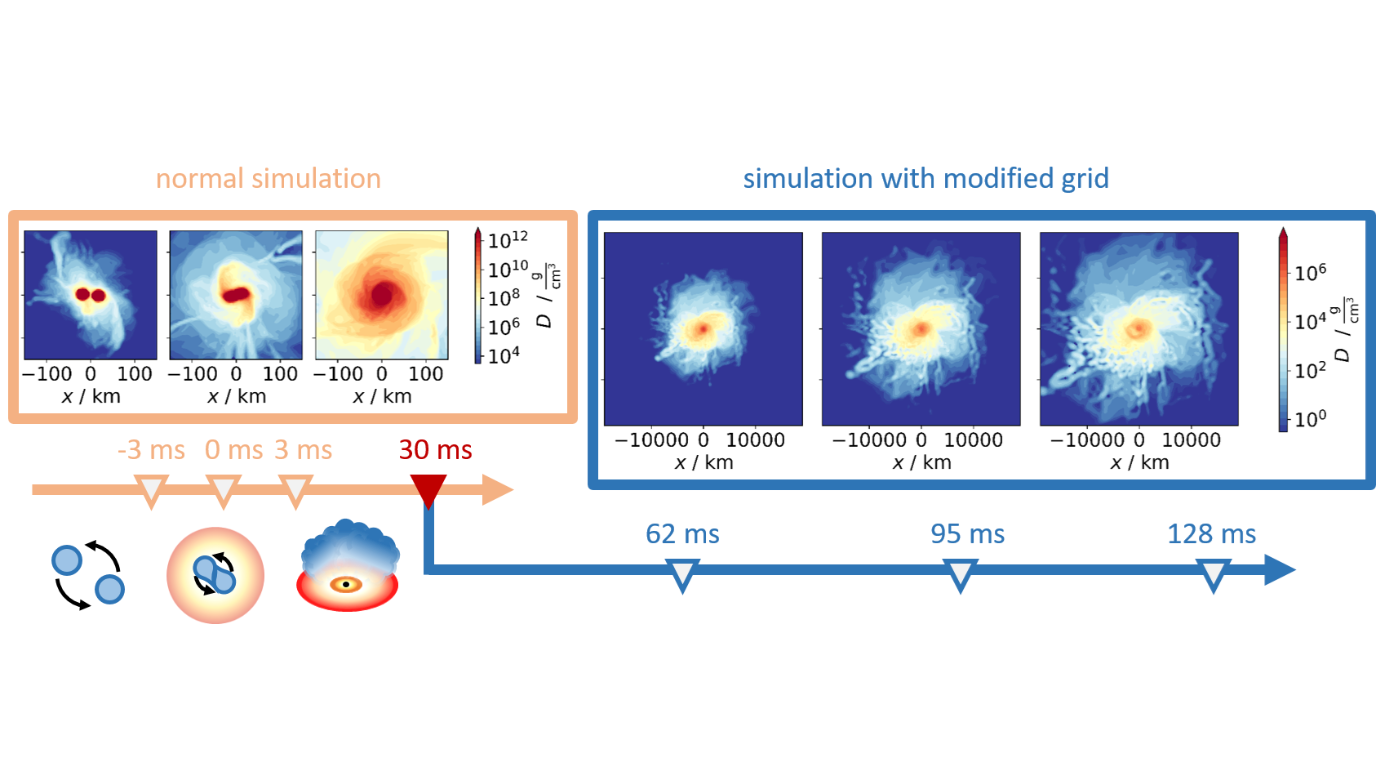Anna Neuweiler (University of Potsdam)
Binary neutron star mergers are events that can be observed using gravitational waves as well as electromagnetic signals. Simulations using numerical relativity are essential for studying the rich phenomenology of these systems and for correctly interpreting observational data. As such, ejecta data from numerical relativity simulations of compact binary mergers can be used as input to radiative transfer simulations to create models of kilonova light curves that are directly related to the binary parameters.
While most radiative transfer simulations subsequently assume homologous expansion of the outward flowing material, this condition might not always be met at the end of the usually very short numerical-relativity simulations.
To investigate when and to what extent this condition is satisfied, we adapt the infrastructure of our numerical-relativity code BAM to allow for longer simulations of the dynamical ejecta component. We find that the deviations from a perfect homologous expansion at ~ 100 ms after merger are slightly less than 30%. In order to determine the impact of these deviations on the computation of the kilonova light curves, we use the ejecta data for different reference times as input to radiative transfer simulations. In fact, the deviations of the calculated light curves are negligible only for reference times from ~ 80 ms after the merger.





















